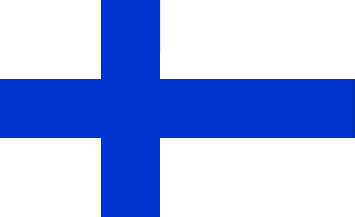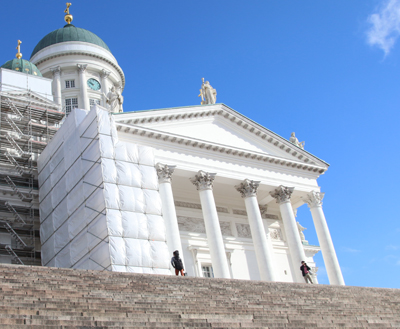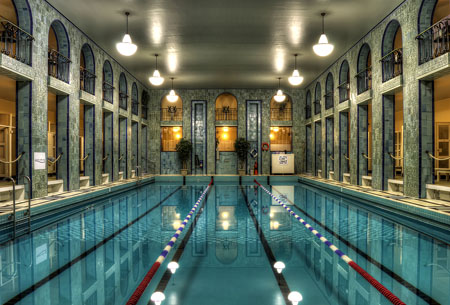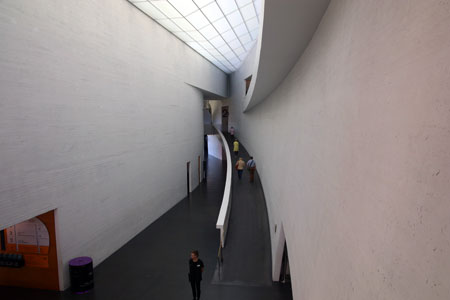 |
HELSINKI |
2016 |
Saturday 3 September 2016
The Finnair flight to Helsinki departs right on time at 11.55. The flight goes smoothly
The apartment is on the 5th floor of an older apartment building. A tiny elevator gets us up there. The apartment is modest in size, but reasonably equipped. We get ourselves set up and then go grocery shopping at K-market around the corner. Then it's time to go to the restaurant. The apartment is located in the Helsinki Design District and the neighborhood is full of shops selling Finnish design. Through the pouring rain, we
Back at the apartment we watch some TV and then go to bed tired.
Weather: 16⁰C, rain
zondag 4 september 2016
We get up around 8am and have breakfast in our apartment. Then I go out to the R-kiosk to get a SIM
card for internet (DNA-telekom)
and 6-day tickets for public transport in Helsinki. For only € 5.65 you
get 1GB of data, which is valid for one month. The public transport
pass for the City of Helsinki HSL will cost € 12 a day. For six days is € 42.
Then we go to the Senate Square for a private guided tour by Happy Helsinki.
We meet our guide Emil in front of the Lutheran cathedral. He is very
enthusiastic and talks nineteen to the dozen. First about the history
of the country and then on the architecture of the Senate Square. All
that we see here was built in the 19th century under Russian rule
(1809-1917). Most of it is neoclassical. To our left is the Senate
building, where the senate of the Finnish Grand Duchy met under Russian
control. Now it is the office of the Prime Minister. Almost mirror
image is the academy building of the Helsinki University on the other
side. In the middle stands the statue of Czar Alexander II. Popular
because he sought more freedom for peasants and also for Finland. The
cathedral from 1852 is Luth
a SIM
card for internet (DNA-telekom)
and 6-day tickets for public transport in Helsinki. For only € 5.65 you
get 1GB of data, which is valid for one month. The public transport
pass for the City of Helsinki HSL will cost € 12 a day. For six days is € 42.
Then we go to the Senate Square for a private guided tour by Happy Helsinki.
We meet our guide Emil in front of the Lutheran cathedral. He is very
enthusiastic and talks nineteen to the dozen. First about the history
of the country and then on the architecture of the Senate Square. All
that we see here was built in the 19th century under Russian rule
(1809-1917). Most of it is neoclassical. To our left is the Senate
building, where the senate of the Finnish Grand Duchy met under Russian
control. Now it is the office of the Prime Minister. Almost mirror
image is the academy building of the Helsinki University on the other
side. In the middle stands the statue of Czar Alexander II. Popular
because he sought more freedom for peasants and also for Finland. The
cathedral from 1852 is LuthFinland belonged to Sweden from the 12th century
until 1809 after the Swedish king Erik IX (the Holy One, 1120-1160)
went to Finland on a crusade to Christianize the pagan Finns. During
their conquest of Finland the Swedesin ended up confronting the
Russians in the east. Russia was Sweden's centuries-long enemy
and Finland a toy between the two superpowers. In 1809 the Swedes
eventually lost Finland to the Russians, which became an autonomous
Grand Duchy. From then on, the Finns were more confident about their
Finnish identity. There was a large Swedish-speaking minority in
Finland - forming the elite for a long time too - and there still is.
Swedish is Finland's second official language and in Helsinki almost
everything is signposted in two languages. Not that everyone is
bilingual, but they were taught at school. The Finns remained loyal to
the Russian Czar in exchange for as many autonomy and space for the
Finnish language and culture they could get.
During the Russian Revolution of 1917, the Finns saw an opportunity to declare themselves independent from Russia. The relationship with the powerful neighbor remained until the end of the Cold War in 1990, the dominant factor in Finnish foreign, but also domestic policy .
In 1939 - after the non-aggression pact with Germany, the Soviet Union claimed Southeast Finland, including Karelia. Finland refused and the Soviet Union invaded the country. The Finns stood their ground bravely, but eventually had to make concessions. Unlike the Baltic States and Poland it kept its independence. After the German invasion of the Soviet Union Finland attacked the Soviet Union in order to recapture Karelia. They accepted German military support. When in 1943 the war odds reversed, Finland got into trouble and was forced by the Russians to drive the Germans out of the country. The Germans left Finland, but did so while vandalising towns and villages. After the war, Finland signed a friendship treaty with the Soviet Union, accepted large compensation obligations and pursued a policy of neutrality, which clearly met the needs of the Soviet Union. President Urho Kekkonen, who led the country in 19 years had the confidence of the Soviet Union and guarded the Finnish relationship with the neighboring country. However, Finland remained a multiparty democratic country with a market economy. After the disintegration of the Soviet Union in 1992, Finland became a member of the EU and introduced the Euro in 2002.
During the Russian Revolution of 1917, the Finns saw an opportunity to declare themselves independent from Russia. The relationship with the powerful neighbor remained until the end of the Cold War in 1990, the dominant factor in Finnish foreign, but also domestic policy .
In 1939 - after the non-aggression pact with Germany, the Soviet Union claimed Southeast Finland, including Karelia. Finland refused and the Soviet Union invaded the country. The Finns stood their ground bravely, but eventually had to make concessions. Unlike the Baltic States and Poland it kept its independence. After the German invasion of the Soviet Union Finland attacked the Soviet Union in order to recapture Karelia. They accepted German military support. When in 1943 the war odds reversed, Finland got into trouble and was forced by the Russians to drive the Germans out of the country. The Germans left Finland, but did so while vandalising towns and villages. After the war, Finland signed a friendship treaty with the Soviet Union, accepted large compensation obligations and pursued a policy of neutrality, which clearly met the needs of the Soviet Union. President Urho Kekkonen, who led the country in 19 years had the confidence of the Soviet Union and guarded the Finnish relationship with the neighboring country. However, Finland remained a multiparty democratic country with a market economy. After the disintegration of the Soviet Union in 1992, Finland became a member of the EU and introduced the Euro in 2002.
We continue towards the ancient trading port where now classic ships are moored. In the distance we see the great icebreakers with names like "Bear" and "Courage". Courage refers to the Finnish bravery in
We walk on to the former prison, now converted into a hotel (Katanajokka). Two cells were made into one room. Signs at some cells indicate which famous prisoner was detained here, including Rysti the wartime President of Finland who was imprisonded here on the insistence of the Soviet Union because of its responsibility for the attack on the Soviet Union in 1941 to recapture Karelia. Only his former cell has kept its bars. Then we co
We arrive at the Havis Amanda statue of Ville Valgren from 1906. It represents Helsinki that has emerged from the sea. We continue on the tree-lined Esplanadi to the statue of Runeberg, the lyricist of the Finnish national anthem "Our Country". The original text from 1846 is in Swedish. Later it was translated into Finnish. He stands more or less in front of the hotel Kämp, the most luxurious hotel in the city. Justin Bieber stayed here recently.
Further afield, at the end of the Esplanadi we find the Swedish theater, where plays have been performed in Swedish for centuries. Then we pass the old (wooden) church from 1826. In fact, it was a temporary church until the Cathedral could be put into use. The Helsinki people got so attached to the bui
Then we walk to the Kampi chapel. It is an oasis of silence in the middle of a lively square with shopping malls, where once the bus station used to be. The chapel is not religious in nature, but a quiet space where you can reflect, pray or meditate. It is made entiely fo Finnish wood and designed by Kimmo Lintula, Niko Sirola and Mikko Summanen of arkitektbyrå K2S. Last stop on our walking tour is the rock church of 1969. The plan for a church was already made in 1936, but the Winter W
Around 3pm we take the tram to the Ateneum museum opposite Central Station. This is a kind of national gallery with all the great names of Finnish art, mostly from the 19th century. Especially Akseli Gallen-Kallela's work depicting the Kalevala myth is impressive. Also Edelfeld, Simberg and Rissanen are well represented. There is also work of foreign contemporaries such as Gauguin, Munch and Van Gogh.
After visiting the museum we look around at the beautiful Central Station
From the station we walk to the Torni hotel in Art Deco style in 1931, with a bar
Weather: sunny, 18 degrees.
Monday 5 September 2016
We have breakfast in our apartment. Then we go by tram 3 to the center. From stop Studenhu
After the opera we have lunch in the Chico restaurant. We take a salad. After lunch we walk to the Olympic stadium. The Olympic park hold the statue of Lasse Viren, the Olympic gold medalist on the 5 and 10km in 1972 and 1976. A little further on is the statue of Paavo Nurmi, who won 9 times Olympic gold in Antwerp (1920), Paris (1924) and Amsterdam ( 1928). We had planned to climb to the Olympic Stadium tower for the beautiful view, but the stadium is being renovated from 2016 to 2019 and we can not enter the grounds. We walk to the Sibelius Monument. By pure chance we run into our guide of yesterday (Emil), who is cohosting a bike tour of Happy Helskinki. The Sibelius Monument honors the greatest Finnish composer of all time. Most famous is he for his work
In the afternoon we take the tram to the western port area and the Ruhoalahti district. This is a redeveloped port and industrial area. We walk along the High Tech Center, where among others F-Secure is based, the supplier of our virus scanner. We continue to Kapeeli, the former cable factory of Nokia. The building dates back to 1954. In 1967 it merged with Nokia cable factory, which was active until then in forestry. In the late 1980's Nokia decided to discontinue the cable production here and started to rent out the premises to artists. Nokia then decided in consultation with the municipality to demolish the building to make way for schools, a hotel and a conference hall. A revolt among tenants prevented this scenario. A
At night we eat at restaurant Juuri. We take the 4 course menu for 52 euros with a wine pairing of 35 euros. Dinner starts with an assortment of so called Säppas, a Finnish version of tapas. Then comes a poached egg with leek and some thing else. Then Trout in two ways and chantarelle. Finally, the dessert with strawberry mousse and ice cream. All delicious.
Weather: Cloudy with sunny periods. 15-19⁰.
Tuesday 6 September 2016
We take the tram to the city center and get out at Studenthuset / Ylioppilastalo. We walk along the Esplanade to the market at the harbor. At the presidential palace preparations are made for a royal visit from Norway. The red carpet is out and an honor guard is being formed. From the quay leaves the ferry to Suomenlinna (Sveaborg). That is a fortification on groups of six islands off the coast. The fortress was built in the 18th century by Sweden on a design by naval architect Augustin Ehrensvärd. In 1808 the Russians conquered Finland, but the fortress was transferred to the Russians later. The Russians reinforced the fortress and extended it. During the Crimean War, the fortress was damaged by British and French shelling. After the war it was restored. After the independence of Finland in 1917, the name Sveaborg (Sweden Castle) was changed to Suomenlinna (Finnish Castle). In 1973 the Finnish Defence passed the complex on to Finnish Heritage conservation. There are currently 900 people living on the islands and there is a naval school, a library, m
In the afternoon we visit the St Georg Pool (Skt Georg Simmhallen / Yrjonkadun Uimahalli). This pool of 1926 in Art Deco style is beautifully preserved. We
 buy
tickets for the 2nd floor. We get a cabin (sectioned with
curtains) cabin with bed and can use the Finnish sauna, the infrared
sauna and steam room. Of course, we can also take a swim in the pool.
And all of that completely naked. Recently you may a use swimsuit in
the pool (not in the saunas), but nobody does that. There are separate
opening days for men and for women. For 14 euros, we can stay here for
2 hours. On the upper gallery are small seating areas overlooking the
pool and bathers, where you will be served by a lady serving drinks and
snacks.
buy
tickets for the 2nd floor. We get a cabin (sectioned with
curtains) cabin with bed and can use the Finnish sauna, the infrared
sauna and steam room. Of course, we can also take a swim in the pool.
And all of that completely naked. Recently you may a use swimsuit in
the pool (not in the saunas), but nobody does that. There are separate
opening days for men and for women. For 14 euros, we can stay here for
2 hours. On the upper gallery are small seating areas overlooking the
pool and bathers, where you will be served by a lady serving drinks and
snacks.After sauna and swimming pool, we have a beer on a terrace on the esplanade and then go back to the apartment. We eat in the evening at the Nepalese restaurant Annapurna. There is a remarkable number of Nepalese restaurants in Helsinki. We no less thanr seven in three days! For us it is the first time, and it tastes fine. The food is similar to Indian.
Weather: 19⁰C and sunny
Wednesday 7 September 2016
We have coffee at Gran Delicato on Fredriksgatan and then take the bus to Avis.We walk to the market
After lunch we drive to Järvenpää. A bit inland on a lake. The town is a drag, but here is, just outside the town the home of Finland's most famous composer Jean Sibelius, who lived here until 1957 when he died at 91. His famous symphonic piece "Finlandia" contributed greatly to the national sentiment of the Finns. After moving from Helsinki to Järvenpää he stopped this genre. After 1926, he published nothing at all, really too critical of his own work. We visit the house called Ainola. Only the ground floor is open to visitors. The daughters of the composer sold the house in 1974 to the state, after the death of their mother Aino Sibelius in the state in which they left it.
In the garden is Sibelius buried with his beloved Aino.
We take a look at the nearby lake Tuusolujärvi, one of the thousands that Finland has. Then we drive to Esbo (Espoo) to visit the home of Axeli Gallen-Kallela. This Finnish painter lived from 1
After having returned the car we drink a beer in the gay bar around the corner, the Cavelier before we walk to our apartment.
At night we eat at Café Bar No. 9, an artsy no-frills eatery, where many young people gather for a tasty but inexpensive meal, at least to Finnish standards. The Lonely Planet promises an affordable meal that does not come off a rotating skewer. And that's exactly right. It is noisy around the formica tables.
We walk back to Gran Delicato for coffee and then to our apartment
Weather: sunny 21⁰C
Thursday 8 September 2016
After coffee at Gran Delicato in Frederiksgatan we take the tram to the center. We still have time left opens to the museum, so we take a coffee at Starbucks, which has a branch in the Akademiska Bokhandeln on the Esplanade. The only branch that we have seen so far in Finland. After the coffee is a few minutes walk to the Kiasma museum of Modern Art. The building, designed by the American architect Steven Holl, is a work of art. The lighting in the building is unique and constantly changing. On the other hand, there are also dark rooms without windows. There are five floors. On the 2nd floor is a changing exhibition, at this time from the Korean artist Choi Jeong Hwa. The third floor shows works from it the museum's own collection. The 4th floor is not accessible due to the build up of a new exhibition by Mona Hatoum (GB), which will start on 7 October. The top floor houses the library and workshops for staff. Some surprising artwork is on show here. One thing even more appea
We then go to the Market Hall at Hietalahden tori (Sandvikens torg). It is no longer a real market hall. 90% of the stalls are restaurants. A few stalls sell delicacies. We eat here at at an Italian joint. The hall is beautifully restored. During the summer months there is there is a flea
In the afternoon we go to the district Arabia to see the Arabiakeskus (Arabia Centre). The old ceramics factory Arabia - a world famous ceramics brand - has been converted into a retail, residential and cultural center. We come for Arabia design museum, but that is unfortunately closed for renovations until November. To comfort us, we throw ourselves at the outlet store of Arabia (ceramics), Fiskars (garden tools and utensils), Iitala (glassware) and Finlayson (home textiles). We purchase some of course. Then we take the tram back to the center and go to the roof garden of the Soko hotel next the station. The hotel was built for the 1952 Olympics and in the lobby that is clearly visible judging by the style and furnishings. We take the elevator to the 10th floor and get a wonderful view of the station and Mannerheimintie. On the roof we drink a glass of wine. After the drink we go to the apartment and later we eat again at the Nepalese restaurant nearby.
Weather: sunny 22⁰
Friday 9 September 2016
After breakfast and packing our suitcases we go for coffee at Gran Delicata which has now become customary for us. After coffee we walk to a viewpoint in the park around the observatory. From a hill at the edge of the park overlooking the harbor of Helsinki and the OlWe get the tram to the central station, where we take the I-train to the airport in Vantaa.
We have plenty of time. We have our boarding cards and baggage tags printed, we read with a scanner the baggage tag and boarding card and we drop the bags on the conveyor belt.
We have lunch at the airport after the security check and wait for our Finnair flight home. The flight is uneventful and we arrive on time at the airport. Our bagage takes about 15 minutes to arrive on the belt, but we can still catch the fast train directly to Rotterdam. In Rotterdam we call an Uber cab, which brings us back home
| |
Other Travel | |
| |
|